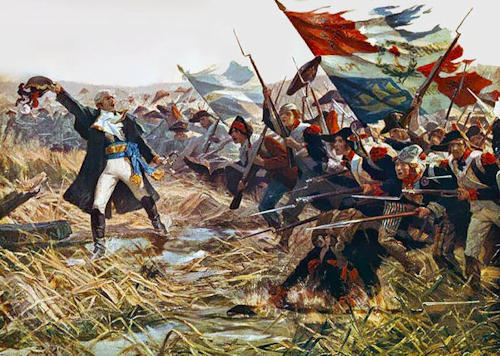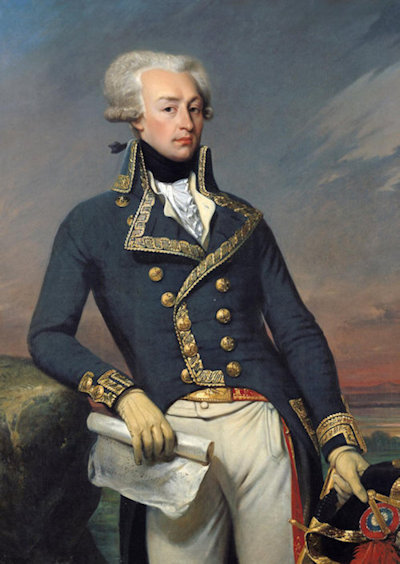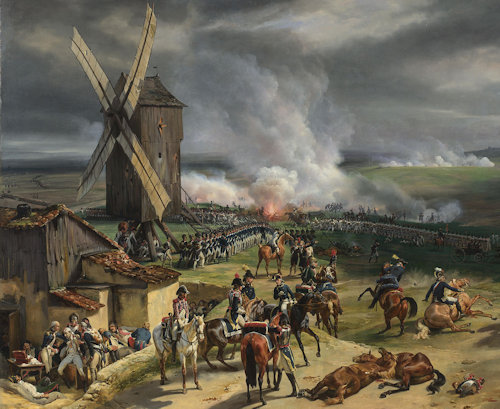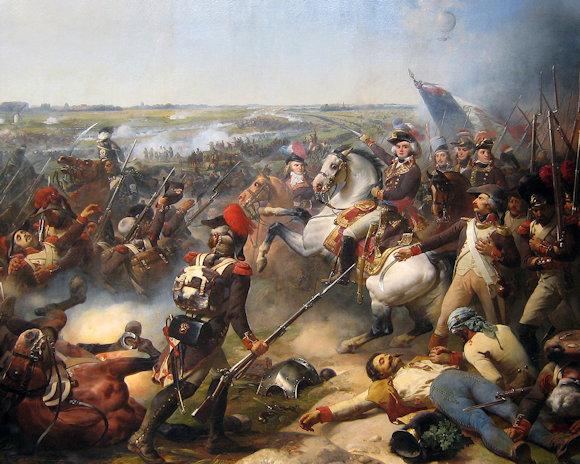The "king's war" was a "private" affair. The military "caste" of one monarchy conflicted with that, identical and, therefore, specular, of another. The "professionals" each deployed their own military "culture" on the field in a confrontation that left dead and wounded on the ground which, being no longer suitable for the present combat and, in general, not even for future ones, did not interest the survivors that much . The "armies of the king" were structured around not particularly numerous teams and, once a soldier died, it was enough to enlist another. The demographics of the country, after all, did not suffer significantly and the people, in general, were scarcely involved. Emblematic, in this sense, the cynic saying: "O Franza or Spagna, provided that if magna", attributed to Guicciardini1. Also because the soldiers were, in fact, such: paid, little and not permanently, to fight and die for a king of whom, often, they had only heard about and, in general, they had never even seen. Fighting and dying ... they were usually the only two things they could do. In other words, they were not called to give their lives, if necessary, for an ideal or for a homeland that was a concept alien to the common feeling of the time. Generally they were men who did not find useful or profitable or possible employment in the "civil" sphere or who from that context found themselves, for many reasons, to be excluded if not rejected. The officers, at various levels, were, on the other hand, real professionals as they belonged, in general as cadet sons, to the noble class which, by definition, was called to the art of arms not so much to defend the homeland, but to their own privileges caste.
 The first "War of the People" of modern times was fought by the armies of revolutionary France against the royal armies of the various Powers of theAncien Régime. Empowered and increased numerically during the Year II (1794) with the influx of volunteers and with the "mass leverage", the French armies were mainly based on the heated revolutionary and patriotic motivation of the soldiers and, also, of the officers, no longer taken from the aristocracy, on amalgamation between regular troops (the "whites") and volunteers (the "blues"), on the election of subordinate commanders, on the promotion by merit and not by blood right and on the presence of the Representatives on mission2 who sought to exalt patriotism and severely repressed betrayals, weaknesses and cowardice.
The first "War of the People" of modern times was fought by the armies of revolutionary France against the royal armies of the various Powers of theAncien Régime. Empowered and increased numerically during the Year II (1794) with the influx of volunteers and with the "mass leverage", the French armies were mainly based on the heated revolutionary and patriotic motivation of the soldiers and, also, of the officers, no longer taken from the aristocracy, on amalgamation between regular troops (the "whites") and volunteers (the "blues"), on the election of subordinate commanders, on the promotion by merit and not by blood right and on the presence of the Representatives on mission2 who sought to exalt patriotism and severely repressed betrayals, weaknesses and cowardice.
From the tactical point of view the revolutionary armies, not disciplined, but endowed with great offensive spirit, founded their successes on the scattered order and on the bayonet charges in tight columns and showed their superiority over the armies of the monarchical powers that had been faced, until then, in the royal war.
After a difficult initial phase characterized by disorganization and distrust in the old aristocratic commanders, who partly defected in part were guillotined, the Revolutionary Armies, led by young and aggressive officers, saved the Republic, repelled the attacks of the Continental Powers and won brilliant victories. The Army was the most reformed organization during the Revolution.
 Officially, the revolutionary armies were initially based on the so-called "tactical regulation" of the 1791, actually elaborated more than a decade before, to perform military operations, but they needed well-trained soldiers and capable commanders. lacking in revolutionary armies, for different reasons, and the first results were absolutely negative.
Officially, the revolutionary armies were initially based on the so-called "tactical regulation" of the 1791, actually elaborated more than a decade before, to perform military operations, but they needed well-trained soldiers and capable commanders. lacking in revolutionary armies, for different reasons, and the first results were absolutely negative.
The "Regulation" was abandoned in favor of simpler tactics already successfully tested by General La Fayette3 (left image) in the American War of Independence. In fact, a particular training was not required and the revolutionary ardor of the soldiers was exploited as much as possible.
However it would be simplistic to consider the French armies of the eighteenth century 90 years unprepared and armed only with revolutionary spirit. The efforts to improve the training were numerous, while the emigration of noble officers opened the military career on merit, especially favoring former non-commissioned officers and junior officers from the ranks of small or very small provincial nobility (like Napoleon, to give an example among many), who could hardly have fast and secure careers in the old regime, but who were also very competent and passionate in training and understanding the needs of soldiers. Indeed, the officers were much more professional than the gentlemen with the hobby of war and the value typical of the previous generation. Finally, the old monarchic army, one of the largest in Europe, did not collapse, despite the loss many officers (superior species) and many foreign mercenary regiments, but remained in place, allowing a continuous exchange of ideas and practices between the old army and the new one (an amalgam before its time). Even the militia and the national guard were reorganized, very different depending on the area, but often using veterans of the previous wars and bourgeois passionate (perhaps in a smoky and abstract) of the debates on the tactics of the previous century, encouraging innovation and the circulation of new training practices focused on the soldier as an individual, citizen, and no longer as a number.
The decisive battle of Valmy, 20 September 1792, won thanks to the French artillery, among the best in Europe for the innovations introduced and for the high professionalism of its Officers, assured respect for the French revolutionary army that in the following ten years undertaken various wars of conquest.

The excellence of the revolutionary artillery, for the same reasons mentioned above, was the prerogative of all the technical bodies, such as the Genius, and Logistics, as the Health Service. The military genius was very developed already at the time of the monarchy, with men able to build bridges and roads. The expansion of the army, however, generated a scarcity of engineers in the various armies: Bonaparte and his army of Italy, for example, in the 1796 had only 2.000 engineers in the face of the theorists 3.300. Materials to build bridges, including boats, were insufficient, and in general the engineers had to improvise.
Logistic and medical services were practically non-existent at the beginning of the war operations that saw the revolutionary armies engaged. The Royal Armies had none at all. Logistics and assistance were contracted to private individuals. The wounded of troops, left there where they fell, were entrusted, often after days and days of agony, to the charity of religious Orders or of pious Organizations. The officers had their surgeons in tow. As already mentioned in our previous contribution, there were several civilian doctors, who then entered the Army to respond to mass leverage, which revolutionized assistance directly on the battlefield. It can certainly be said that the current management of the health emergency in general was born on the battlefields of the Revolution!
The 23 August 1793 the following proclamation orders the mass leverage: "From this moment and until the enemies are not driven out of the Republic's soil all French citizens are called to military service. Young people will fight; the married men will build weapons and transport provisions; women will sew curtains and clothes and will serve in hospitals; children will get gauze from linen; the elderly, in the streets, will provoke the courage of the warriors preaching the hatred of the king and the unity of the Republic. "The mass lever gave good results and it was not necessary to repeat it until the 1797. The acquisition of experiences allowed to carefully evaluate the most useful tactics. Similar experiences dictated the following guidelines regarding the activities of the Technical and Logistic Bodies, of the Health Service, in particular revolutionizing ancient customs and traditions.
Enzo Cantarano, Federico Bizzarri, Luisa Carini
Footnotes
1 Francesco Guicciardini (Florence, 1483 - Arcetri, 1540) was an Italian writer, historian and politician.
2 They were sent overtime to the French National Convention to maintain law and order. They were invested with practically unlimited powers that allowed them to supervise the actions of the military commanders themselves, with the power to judge their work, and to set up revolutionary tribunals with full powers.
3 Marie-Joseph Paul Yves Roch Gilbert du Motier, Marquis de La Fayette (1757 - 1834), was a French military and politician, protagonist of both the American Revolution, first and then the French one.
REFERENCES
Cantarano E. Carini L. History of Medicine and Assistance for Health Professions. UniversItalia, Rome, 2013 pag 151
Chandler DG, Napoleon's campaigns, vol. THE, Milan, BUR, 2006
Crowdy T, French Revolutionary Infantry 1789-1802, Osprey Publishing, 2004.
Elting JR, Swords Around a Throne: Napoleon's Grande Armée, 1997.
Nafziger G. Royal, Republican, Imperial, a History of the French Army from 1792-1815: 4 Vol












